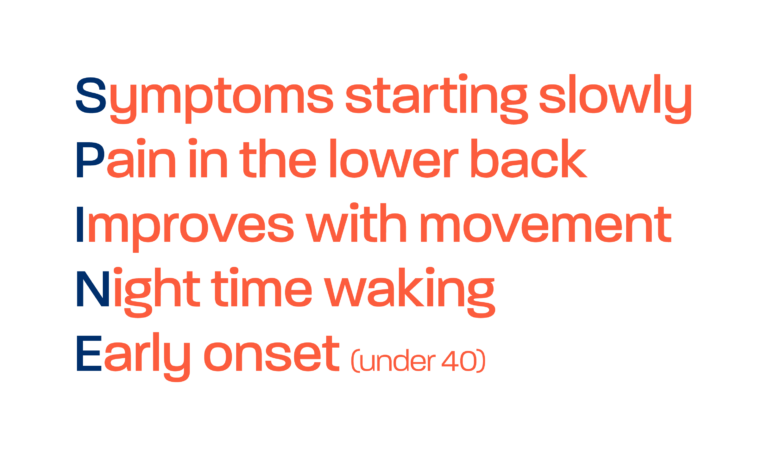Key publications: axial SpA public awareness
We have curated some key publications that suggest a need to improve public awareness of axial SpA - to empower patients, reduce delay to diagnosis and ultimately improve long-term outcomes.

Raising Public Awareness Papers
Comparison of rates of referral and diagnosis of axial spondyloarthritis before and after an ankylosing spondylitis public awareness campaign
Harrison AA, Badenhorst C, Kirby S, White D, Athens J, Stebbings S. Comparison of rates of referral and diagnosis of axial spondyloarthritis before and after an ankylosing spondylitis public awareness campaign. Clin Rheumatol. 2014;33(7):963-8. https://link.springer.com/article/10.1007/s10067-014-2551-0#citeas
A television advertising campaign was conducted by Arthritis New Zealand in 2011 to raise public awareness of radiographic axial spondyloarthritis (ankylosing spondylitis – AS). Independent analysis showed that the awareness campaign reached 82 % of the primary target audience. In the 3 months after the awareness campaign, there was a significant increase in referrals for suspected AS compared with the 3 months before the campaign (54 vs. 88, 63 %, p = 0.0056). Referrals for other conditions did not change. The number of referrals resulting in a diagnosis of axial SpA also increased (27 vs. 44, 63 %, p = 0.0576). The mean ages of the patients referred and of those diagnosed with axial SpA did not change. The male/female ratio was 1:1 among the referrals for suspected AS and 2:1 in referrals diagnosed with axial SpA, before and after the campaign. The Arthritis New Zealand AS public awareness campaign was associated with a significant increase in referrals to rheumatology services for suspected AS and an increase in the diagnosis of axial SpA in clinics.
The journey to diagnosis in AS/axial SpA: the impact of delay
Martindale J, Goodacre L. The journey to diagnosis in AS/axial SpA: the impact of delay. Musculoskeletal Care. 2014;12(4):221-31. https://onlinelibrary.wiley.com/doi/full/10.1002/msc.1080?saml_referrer
Qualitative study of ten people newly diagnosed with axial SpA – an average of 10.1 years time to diagnosis. This paper is a powerful exploration of the journey to diagnosis in axial SpA. It reflects the “psychological price” often paid during diagnostic delay and highlights the need for campaigns such as Gold Standard, to build public awareness of the symptoms of inflammatory back pain, to empower people to seek help from healthcare professionals and to begin to understand their symptoms.
Four themes were identified in the analysis: ‘what’s going on?’, ’fighting for a diagnosis’, ‘being adrift’ and ‘the start of a journey’. The central concept grouping these themes was ‘finding my route map’, which conveyed the challenges for patients of living through a period of unnamed symptoms that impacted on all aspects of their life but which, due to the lack of a diagnosis, left them unable to explain to themselves and others what was happening to them, how this would impact upon their future life, and what could be done to move forward. Individuals initially attributed the back pain to a past one-off incident or event (e.g. injury, facture, weight-loss, miscarriage), but over time, due to the recurrent nature and for some, increasing severity of symptoms, they came to the realisation that this was not the case.
The variable nature of symptoms led to confusion around severity of what was happening and whether or not to seek medical assistance. In some cases, people described simply “putting up” with their symptoms – nearly all participants describing having to “push” for something to be done, and “fighting” for a diagnosis. The nature of the symptoms led to people finding it difficult to convey what they were experiencing, and led to feelings of not being understood, or in some cases, even not being believed. Patients showed an evident feeling of lack of knowledge and control, in addition to feelings of helplessness, depression and frustration.
The sense of relief when finally given a diagnosis was evident – participants feeling empowered with the knowledge that there was something they could do to help themselves, that their condition was not life-threatening and also that health professionals believed them.
